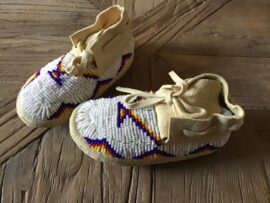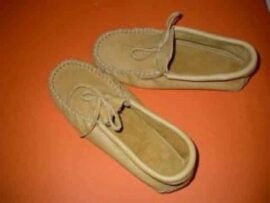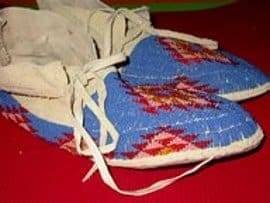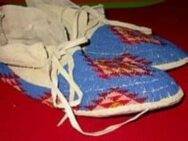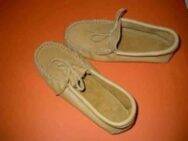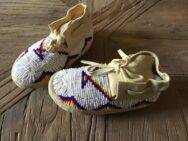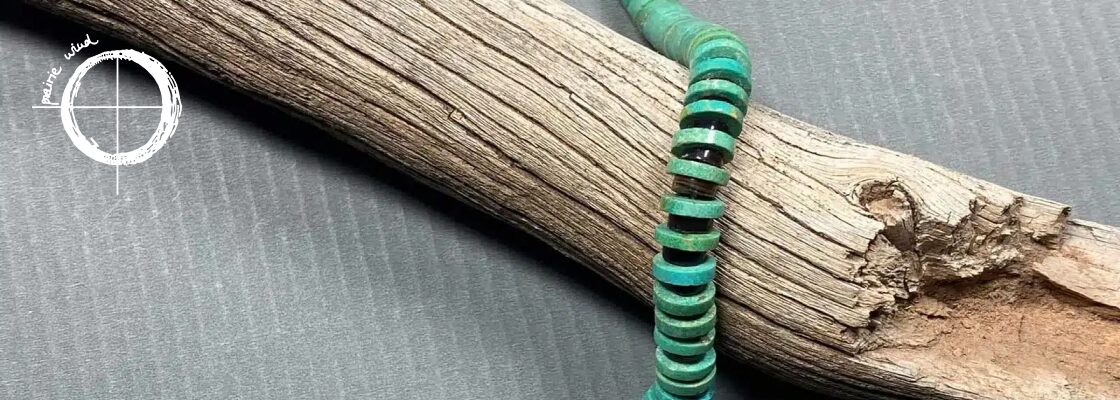
Native American arts & crafts
Moccasins (Mokassins)
The word «moccasin» comes from the Algonquin Powhatan language: «makasin».
The white colonialists adopted this term as a designation for the slip-on shoes without heels used by many Indian nations.
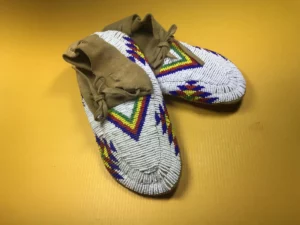
peculiarities of the nations
Every nation had its own type of slip-on shoe, which differed in material, sewing technique, decoration and sole.
The Blackfeet and the Chippewa even got their names after their moccasins. The natural environment also had an influence on the shoes.
Tribes in the deserts and prairie often wore moccasins, made from a soft leather upper sewn to a durable piece of rawhide underneath.
Typical of Apache moccasins was an upward-facing reinforcement on the sole, which protected the seams from stones and other hazards. The moccasins are often decorated with glass beads ( beadwork ).
Moccasins (Mokassins)
The word «moccasin» comes from the Algonquin Powhatan language: «makasin».
The white colonialists adopted this term as a designation for the slip-on shoes without heels used by many Indian nations.

peculiarities of the nations
Every nation had its own type of slip-on shoe, which differed in material, sewing technique, decoration and sole.
The Blackfeet and the Chippewa even got their names after their moccasins. The natural environment also had an influence on the shoes.
Tribes in the deserts and prairie often wore moccasins, made from a soft leather upper sewn to a durable piece of rawhide underneath.
Typical of Apache moccasins was an upward-facing reinforcement on the sole, which protected the seams from stones and other hazards. The moccasins are often decorated with glass beads ( beadwork ).


